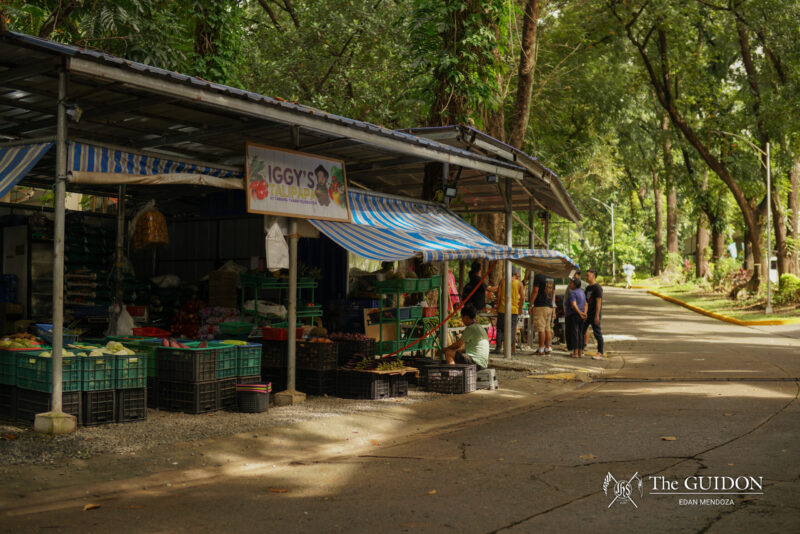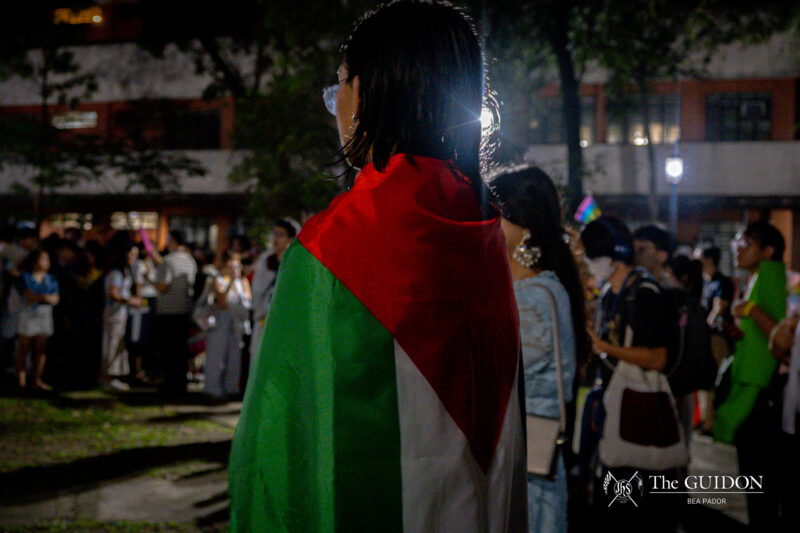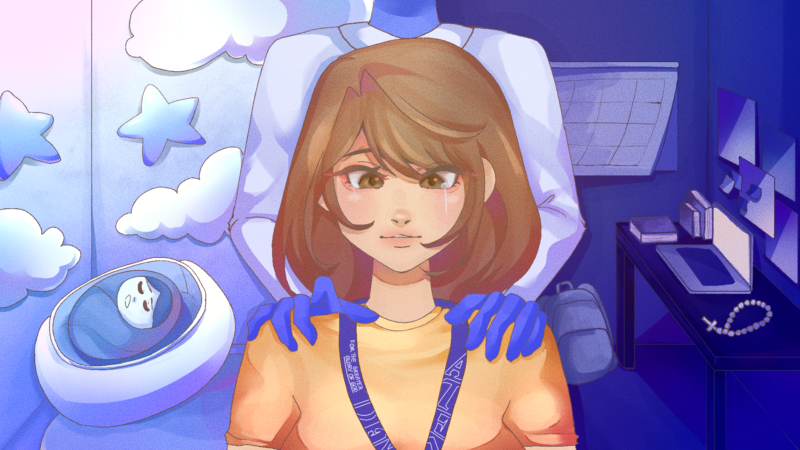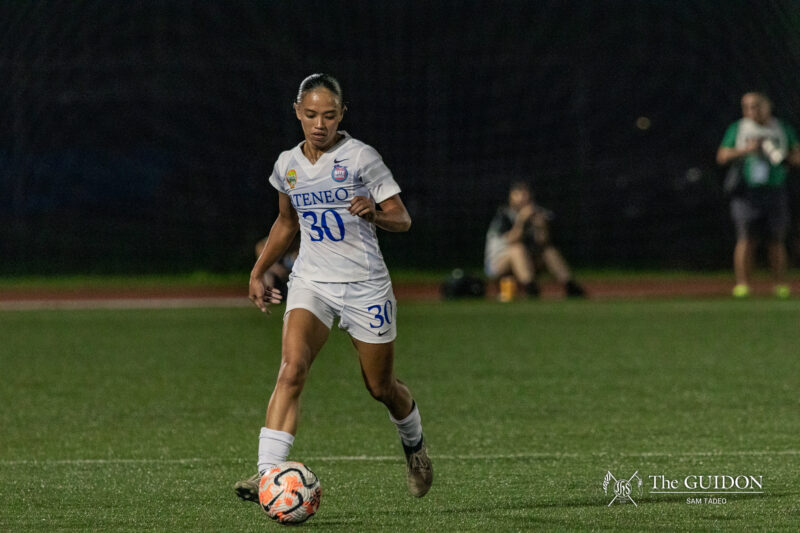There’s always a moment in history that rattles a generation, one that means things will never be the same again. For our grandparents, it was the Japanese occupation during World War Two. For our parents, it was the Aquino Assassination. For us, it happened on the 26th of September 2009—the day Ondoy hit.
Literally everybody was affected, and what makes it unlike any we have experienced is that it hit so close to home. Everyone knows someone who lost something to Ondoy, and whether they admit it to themselves or not, things have changed.
New home lost
A little over a year ago, senior Adrian Santos, his brother, and their father moved into their new home in posh Loyola Grand Villas subdivision in Quezon City, overlooking the Marikina River. Cruel irony then that it was that very same river which took so much in so little time.
“I stood at our front door, crushed. Three of our four cars were nearing their demise,” he says. In those five or so minutes, the water rose from ankle-high to waist-deep.
With his father still immobile from a recent stroke, Adrian and his brother decided to carry him out of Adrian’s bedroom window, placing him on a mattress and passing him on through the interconnected houses of the neighborhood. Their father was fine thanks to their neighbors. His new home though, was not.
“A couple of million in repairs at least,” says Adrian. “We wake up every day and we see what the flood did to our brand new home. Of course we’re thankful nobody was hurt, but a lot of things were lost—and it was pretty traumatic.”
Kwento ni Ate
Very few people know that Ate Alma of the SEC B photocopy station lives in Tumana, Marikina, one of the areas hardest hit by the typhoon. In a little under two days, everything she worked for vanished. Her new Karaoke system—not even completely paid for yet—was gone.
With Tumana living conditions unlivable post-typhoon, she was forced into an evacuation center. “Mahirap doon. Unahan sa mga relief goods. May damit nga, pero walang twalya. Minsan magsusuot kami ng damit, basa pa katawan (It was difficult—you had to compete for relief goods. There were clothes but no towel. I’d end up wearing clothes still wet from the bath).”
Returning home was especially difficult. At her doorstep, Ate Alma remembers the tears that streamed down her face when she saw mud caked from the floor to the ceiling.
Aside from losing her home, most painful was the possibility of losing her job. In the wake of Ondoy’s devastation, her family was forced to move to Laguna with her in-laws. Had it been permanent, Ate Alma says the distance from Laguna to Ateneo would’ve been too much for her to continue working. “Nalungkot ako dahil ma-mi-miss ko itong trabaho ko—yung mga bata, lahat (It was hard. I’d miss this job—the people, the students, everything).”
Today, she’s back in Tumana and still working in the Ateneo. She braves the mud and dust still in her home, if only to maintain a semblance of normalcy. Still, her home is a shell of what it used to be. “Nawala na ang dating tingkad ng bahay namin (Our house has lost its sparkle),” she says. “Minsan nakakawalang gana (Sometimes it leaves you feeling hopeless).”
The long journey home
Another household wrecked by the devastating rainfall of the typhoon was Dr. Markus Locker’s, a professor from the Theology Department. Like the hundred or so members of the Ateneo community, he lives in Ateneoville, nestled between Marikina and San Mateo, an area very close to the Marikina River.
Arriving at the Ateneo at 11am, Locker had no idea about the magnitude of the typhoon. “Though the sky was dark, the winds were not strong,” he says. “It did not really feel like a typhoon.”
Thirty minutes after his arrival in the university, his wife gave him a call. With their house being one of those closest to the river, his then-distraught wife told him that water has entered the house.
Locker decided to leave his car behind and walk home, a journey that would last three hours. “Underneath the water, the ground felt like it was shaking,” he recalls. The shaking turned out to be asphalt from the roads, ripped by the strong current from the flood, the large chunks of which undercut and led to Locker’s severe foot injuries.
Though items of sentimental value, such as an Austrian/German book he bought 20 years ago, were lost, the Locker household was just thankful that only ‘replaceable’ things were lost, unlike what other people experienced.
The spirit of Christmas
Today, things seem back to normal. Repairs and remnants of the incident aside, Adrian and his family are moving on pretty well. They are even look forward to their annual Tagaytay rest house Christmas trip.
For Ate Alma, she and family are back to their optimistic ways. “Even if we lost a lot, we’re all still alive,” she says in Filipino, laughing. “No karaoke? We sing in the bathroom!”
Locker and family are the same as well. “Looking back, you remember all the times when you say you’ll throw things out but you never get around to doing it,” he says. Ondoy did it for us.”
And in spite of the trauma these individuals received, reflection has been key, especially for Locker. “To a certain extent, you had to let it all happen until you could do something. There are certain times in life in which you have to stand and hope that things will pass and not affect you too drastically. At the height of the storm, you are helpless—and some things are just out of your control.”
Once a generation, an event comes that changes everything, and in the face of all the pain that it brought to so many, Ondoy taught us something about times like these: the only thing one can do is wait for it to pass and move forward with the experience.
Ondoy told on the Net
Immortalized on the Internet after the exhibit in the SEC C foyer last October, ondoyuntold.tumblr.com is, as the name suggests, the tumblr account of the untold Ondoy stories during the days of the storm. A project spearheaded by Rowena Azada-Palacios as a project for her Philosophy class last semester, it contains real accounts, opinions, and retellings of stories of the time the big one hit, and serves as a reminder of the heroism and survival of the people affected.






